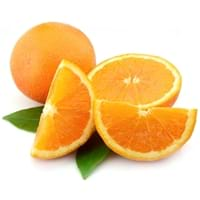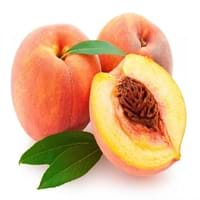Health Benefits
Arthritis treatment, Cancer prevention, Heart care
Cancer prevention, Heart care, Improves eye vision, Reduces stress, Regulation of heart rate
General Benefits
Anti-inflammatory properties, Cures cough, Cures fever, Digestive aid, Healing of wounds, Maintains healthy cholesterol level
Anti oxidant properties, Eye care
Skin Benefits
Anti-aging benefits, Brightens and lightens complexion, Reduces wrinkles, Treatment of dark spots
Heals sunburn, Reduces wrinkles, Treatment of skin diseases
Hair Benefits
Promotes longer and healthier hair, Protects hair, Rejuvenates scalp, Shiny hair
Prevents hair loss
Allergy Symptoms
Abdominal cramps, Hives, Itching, Nausea, Wheezing
Abdominal pains, Anaphylaxis, Breathing difficulty, Diarrhea, Dizziness, Hives, Itching, Lightheadedness, Nasal congestion, Nausea, Swelling of mouth, tongue or lips, Tingling sensation in mouth, Vomiting, Wheezing
Side Effects
Allergic reaction, Skin rash, Possibly unsafe during pregnancy
Allergic reaction
Best Time to Eat
As a snack in the late afternoon, Eat the fresh ones, avoid mixing with any other foods, don't eat after meal., Morning time (before lunch), Strictly avoid empty stomach
As a snack in the late afternoon, Eat the fresh ones, avoid mixing with any other foods, don't eat after meal., Morning time (before lunch)
Vitamin B5 (Pantothenic Acid)
Vitamin C (Ascorbic Acid)
Vitamin K (Phyllochinone)
Phytosterol
Not Available
Calories in Fresh Fruit with Peel
Not Available
Calories in Fresh Fruit without Peel
Not Available
Calories in Frozen Form
Not Available
Season
Winter
Autumn, Summer
Varieties
Clementine, Dancy, King Mandarin, Murcott, Ponkan, Robinson, Satsuma and Sunburst
Reliance, Sweet Scarlet, Spring Snow, Sugar May, Santa Rosa, Red Beauty, Glowhaven, Cresthaven and Redhaven Peaches
Color
Orange
Pink, Red, White, Yellow, Yellowish-orange
Inside Color
Orange
Yellow
Origin
South-Eastern Asia
China
Grows on
Not Available
Trees
Soil Type
Well-drained
Sandy loam, Well-drained
Climatic Conditions
Sunny
Cold, Warm
Facts about
- It is known by another name ' Mandarin'.
- Oil extracted from its peel is used in various skin and hair care products.
- Tangerines is also known as the ‘Christmas Orange’ because it is used to stuff kids' stockings..
- In china, peaches are considered as a symbol of good luck.
- From 1982, august is National peach month in USA.
- In roman times, Peaches were also called as Persian apples, as people assumed that they originated from Persia.
Spirits
Not Available
Yes
Cocktails
Not Available
Yes
Other Countries
Brazil, Iran, Italy, Japan, Korea, Morocco, Spain, Turkey
Greece, Italy, Spain, United States of America
Top Importer
China
Germany
Botanical Name
Citrus reticulata
Prunus persica
Synonym
Citrus clementina or Citrus nobilis
Not Available
Subkingdom
Tracheobionta
Tracheobionta
Division
Magnoliophyta
Magnoliophyta
Class
Magnoliopsida
Magnoliopsida
Species
C. reticulata
P. persica
Generic Group
Citrus fruit
Rose
Difference Between Tangerine and Peach
We might think that Tangerine and Peach are similar with respect to nutritional value and health benefits. But the nutrient content of both fruits is different. Tangerine and Peach Facts such as their taste, shape, color, and size are also distinct. The difference between Tangerine and Peach is explained here.
The amount of calories in 100 gm of fresh Tangerine and Peach with peel is Not Available and 39.00 kcal and the amount of calories without peel is 53.00 kcal and Not Available respectively. Thus, Tangerine and Peach belong to Low Calorie Fruits and Low Calorie Fruits category.These fruits might or might not differ with respect to their scientific classification. The order of Tangerine and Peach is Sapindales and Rosales respectively. Tangerine belongs to Rutaceae family and Peach belongs to Rosaceae family. Tangerine belongs to Citrus genus of C. reticulata species and Peach belongs to Prunus genus of P. persica species. Beings plants, both fruits belong to Plantae Kingdom.









